Turmeric plant: what is, growing at home
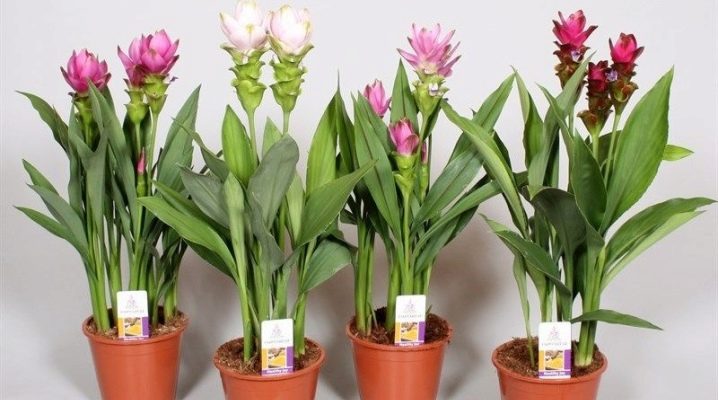
Houseplants have been constant human companions for many years. Green assistants not only decorate the interior, but also improve the climate and atmosphere in the living space. On the windowsills of many apartments, you can see not only classic plants, but also exotic ones. One of the unique home flowers is turmeric. This plant has been successfully adapted by breeders to home conditions and has gained high popularity among many flower growers. Turmeric not only performs decorative functions, but is also a fragrant spice and medicine.
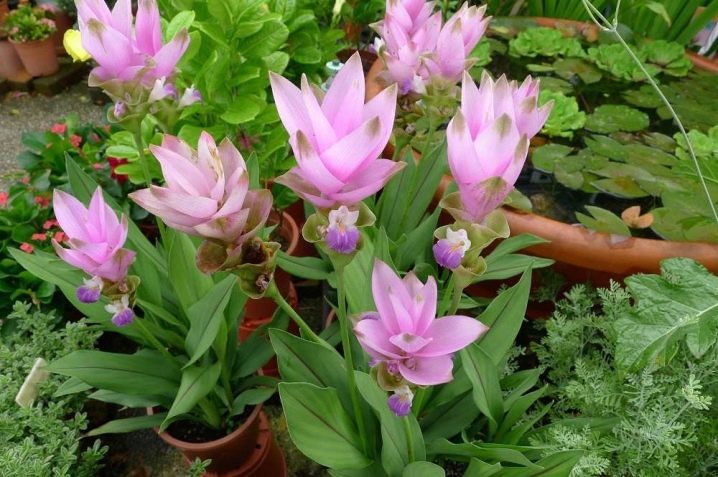
Description of the plant
Turmeric is a herb that belongs to the Ginger family. Due to its unique taste, the plant received a second name - Indian saffron. In their natural habitat, biologists have more than 35 species of this flower. Turmeric is native to India, but the spicy flower can be found in parts of the Philippines, China, Japan, and Indonesia. The maximum plant height can be about 100 cm.
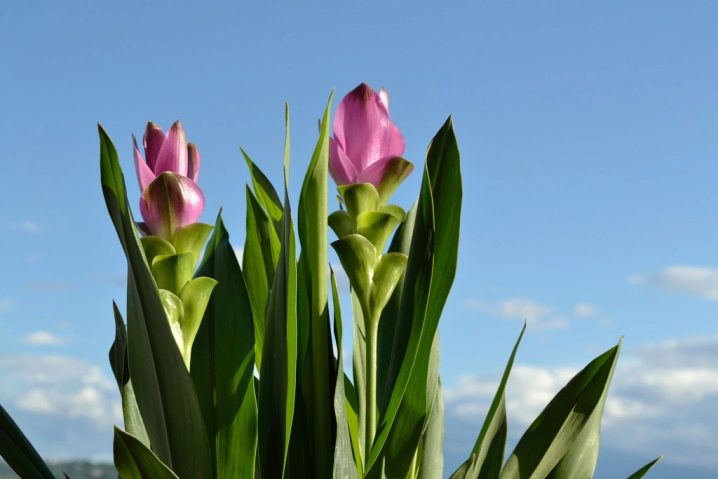
The strong root system has orange flesh and a brown top layer. Wide leaves of dark green color have long petioles and smooth edges. Pale flowers are located on long peduncles and have bright bracts. Flowers are collected in an inflorescence, the diameter of which can reach more than 20 cm. An adult and healthy plant forms several peduncles during flowering.

The flowering period begins in July and ends in October. The flowering plant looks very impressive and can be a decoration for any greenhouse.
The long and painstaking work of breeders has made it possible to breed varieties of various colors and sizes. A perennial plant is widely used both in medicine and in cooking.
Dried and crushed rhizomes are used as an aromatic and vibrant seasoning that gives the dish a rich color and unique taste. In the food industry, turmeric is used to make liqueurs. Many manufacturers add bright powder to their chips, cheeses, mustard, margarine and curry.
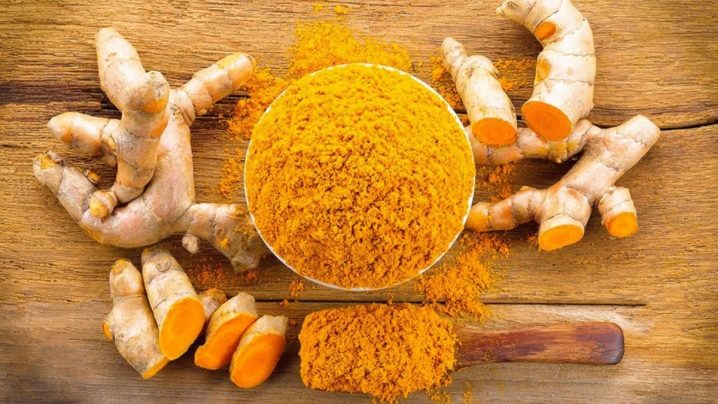
Turmeric is widely used in medicine as well. The Indian plant has antibacterial and disinfectant properties, thins the blood and prevents blood clots, lowers blood pressure and blood sugar, strengthens the walls of blood vessels, normalizes the digestive system, prevents the development of fungal and viral diseases, and also removes toxic substances from the body.
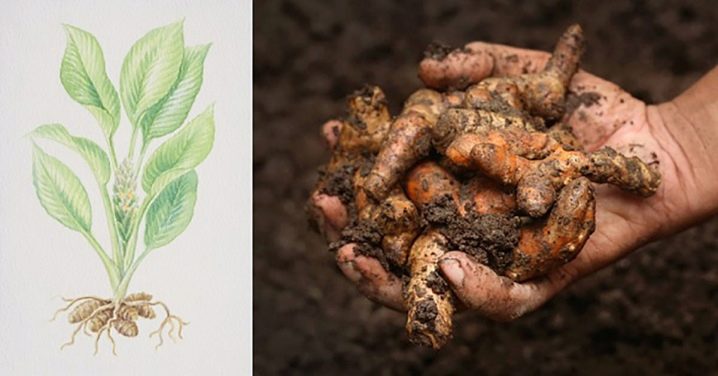
Long-term laboratory studies have shown that regular consumption of turmeric prevents the development of cancer.
The simultaneous administration of medications and orange powder greatly enhances the effect of medications.

Professional beauticians recommend adding turmeric powder to masks and facial formulations. In some countries of the world, the coloring pigment of the plant is used as a textile dye, which has a high level of resistance to sunlight.

What types are suitable for growing?
Despite the large number of varieties of turmeric, only a few species can be used as a houseplant.
- Fragrant - a fragrant appearance that has a fleshy elliptical root system. The color of the pulp is yellow. The tubers are fusiform. The height of the leaf plate is 60 cm, and the width is 20 cm. The length of the bracts is 5 cm. This variety is highly popular in the confectionery industry.
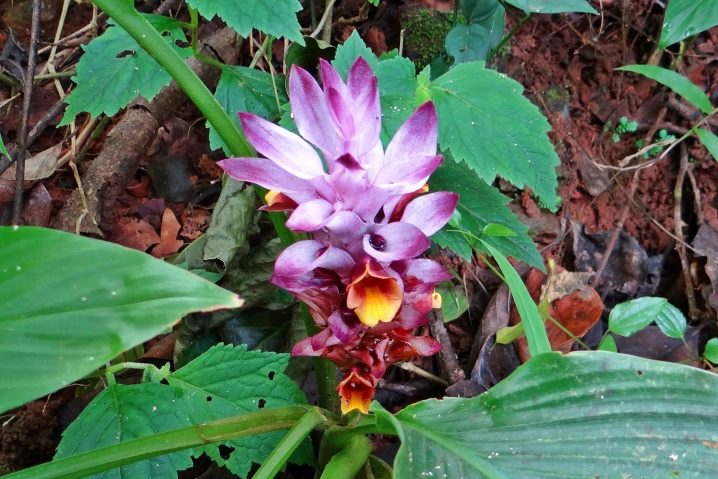
- Round - a popular species that has oblong roots. The shape of the inflorescences is round. The rhizome is used to make starch.
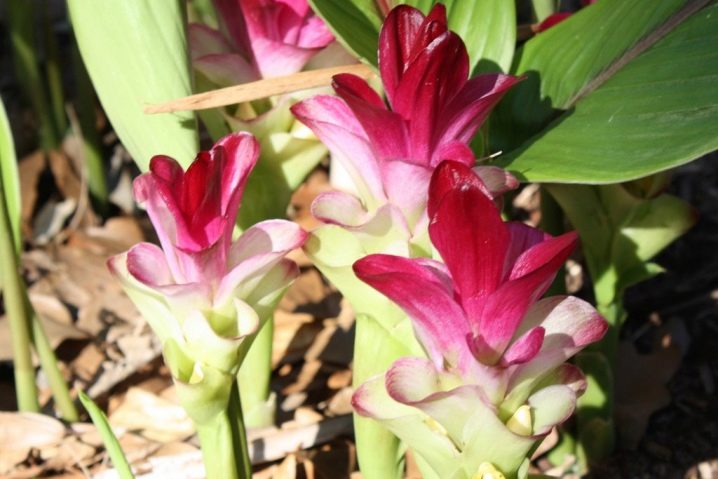
- Sumatran Is an ornamental variety that was found on the island of Sumatra. This species is endangered and is grown only as an ornamental plant.
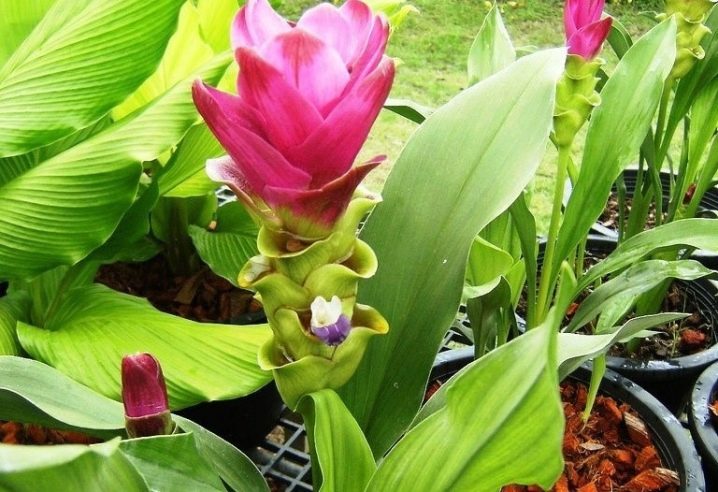
- Oysteroid - a tall plant, which has a second name - the Siamese tulip. The maximum height of straight dark green leaves is 80 cm. A distinctive feature is the presence of apical leaves near the peduncles with white flowers. The color of the bracts can be pink, purple and white.
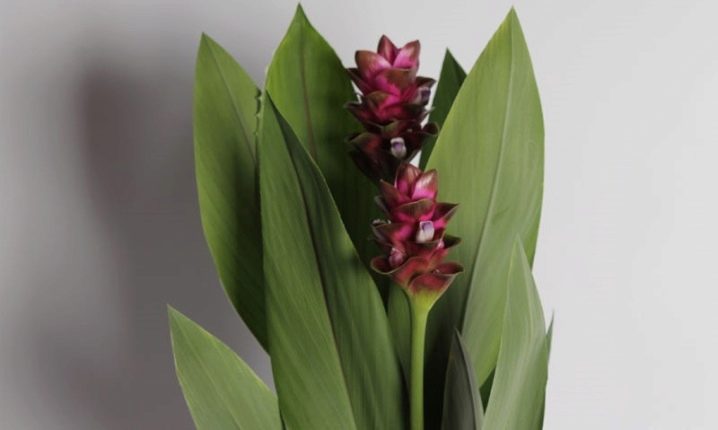
- Long (yellow ginger) - a fragrant variety that has two-row leaves. The diameter of the main rhizome can be up to 40 mm. The shape of the yellow flowers is tubular, three-lobed. The chemical composition of the rhizome includes curcumin, starch, essential oil, phellandrene, and tsingiberen.
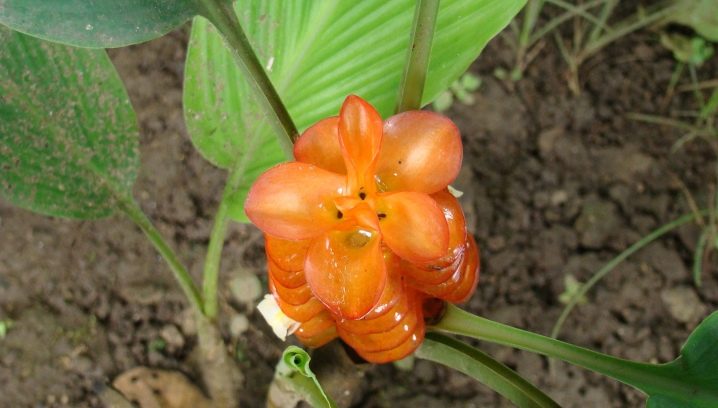
- Cytvaric (cydoaria) - a bright and unusual view, which, with the help of apical leaves, creates an unusual funnel near the peduncle. This composition is very beautiful and unusual, and also has common features with lotus petals. The spiral arrangement of the bracts gives the flower a non-standard appearance. The shape of the top of the porcelain leaves is pointed. The maximum number of inflorescences is 7. Indoors, the plant can grow up to 50 cm in height. A distinctive feature of the species is the presence of a bend at the ends of long and wide leaves.
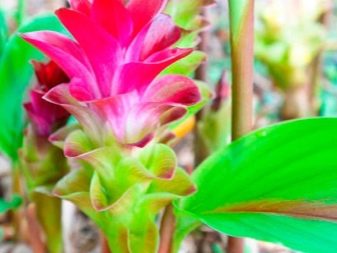
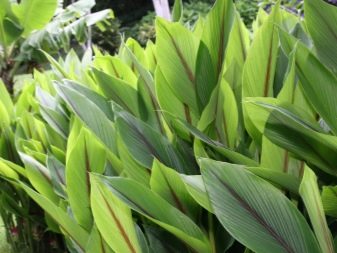
Before purchasing a plant you like, it is imperative to study its distinctive features and care rules.
Conditions of detention
Turmeric is a heat-loving flower that has a negative attitude towards direct sunlight. The maximum temperature in the summer period should not exceed +27 degrees, and during the winter rest period, the temperature level is in the range from +10 to +15 degrees. Florists recommend growing turmeric on windowsills that face south or east.
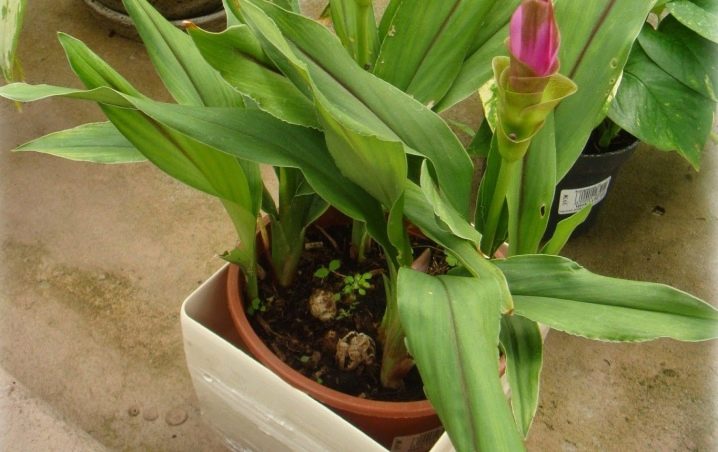
The moisture level near the flower should not be lower than 60%. The flower has a negative attitude towards sharp temperature changes and the presence of drafts in the room. In comfortable conditions, the flowering period of one peduncle can last more than 2 months, and more than 5 peduncles can grow from one root.
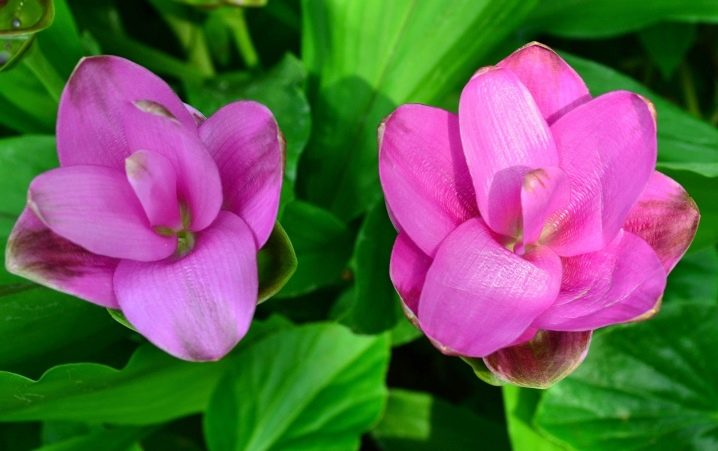
After the flowers wither, all inflorescences must be removed along with the peduncles.
In late autumn, the entire aerial part of the turmeric wilts. During this period, remove the entire root system from the flower pot and place it in a container of dry sand. For the wintering of the root system, you need to put a container with sand on the bottom shelf of the refrigerator, where the air temperature is +10 degrees. It is not necessary to moisten the soil during the rest period.
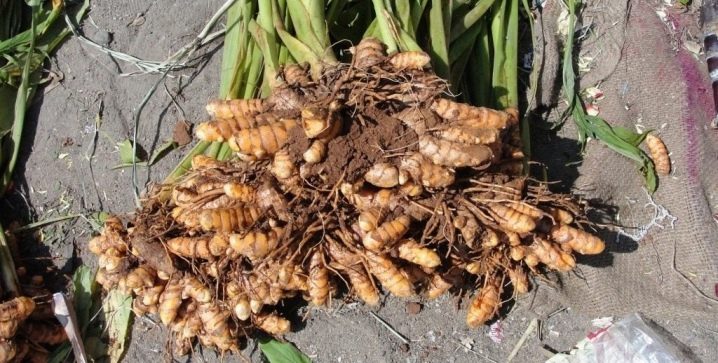
At the beginning of spring, you need to plant the rhizomes in a new pot with a nutrient composition and begin to carry out all the standard procedures for caring for the plant. The main feature of the flower is a quick set of green mass and the appearance of color in early July. Botanists note the fact that it is very rare to collect seed material from turmeric at home.
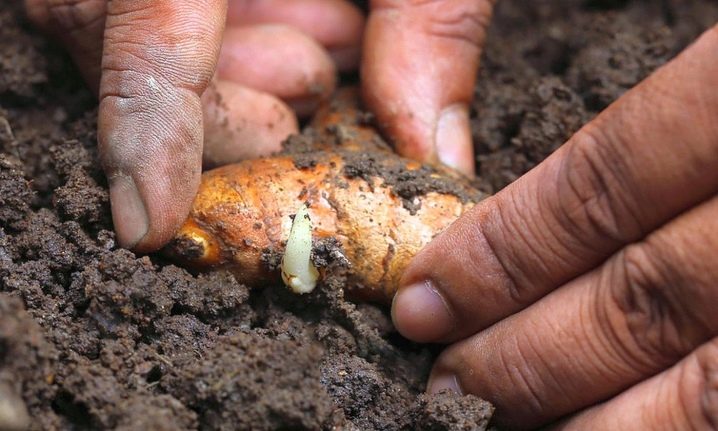
If the rules for the care and maintenance of the flower are not followed, the following problems:
- low light level - slowing down the growth and formation of green mass, changing the shade of the leaf plate;
- low humidity and untimely watering - yellowing and dying off of the ends of the leaves;
- planting a small rhizome - the formation of a small number of peduncles;
- violation of the temperature regime during the rest period - complete absence of flowering.

Landing
The planting process consists of several stages:
- the choice of the landing capacity;
- nutritional formula preparation;
- preparation of planting material.
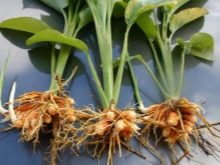
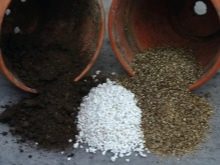
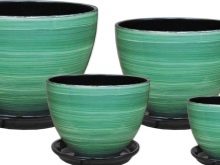
Prepared shoots of the rhizome must be buried in the chosen flower pot and watered abundantly.
When growing a plant from seeds, it is necessary to lay out the planting material on the surface of the earth and sprinkle it with soil a little. Moistening the soil surface should be carried out only from a spray bottle. A prerequisite for the rapid and massive germination of seeds is the presence of a film cover, which will create a greenhouse effect. Novice gardeners should remember to ventilate the pot and moisten the soil in a timely manner. Only after the emergence of shoots can the film be removed. At the stage of formation of 2-3 leaves, breeders recommend picking.

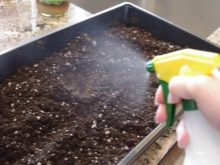
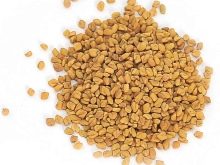
Turmeric can be grown not only at home in pots, but also in the open field in the country and in the garden... The most favorable climatic conditions for growing turmeric in the open field are in the southern regions, where it is early spring and late autumn. In more severe conditions, the plant in the summer can be simply taken out to the balcony or summer terrace. The most favorable time for planting rhizomes is late March or early April.
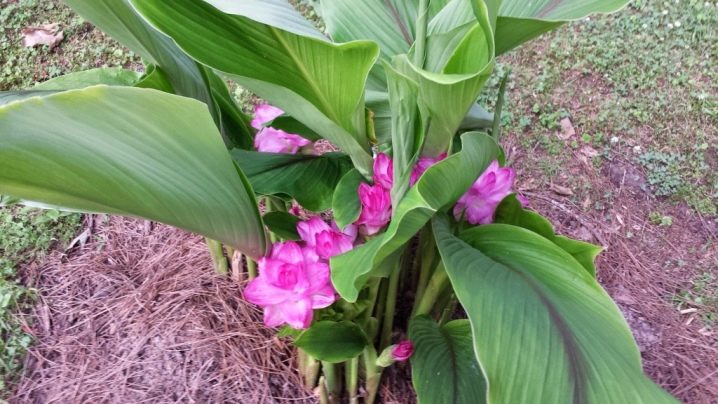
For planting rhizomes, it is necessary to choose areas with penumbra, which have a loose sandy soil. Before planting, it is imperative to dig up the area and level it. In the prepared soil, it is necessary to form planting pits with a depth of no more than 20 cm, in which 2-3 rhizomes should be laid. A prerequisite is the upward direction when planting the kidneys. The thickness of the earth above the roots should not be less than 2 cm.
Planting holes must be spilled abundantly with water at room temperature.

How to care?
Caring for a spicy plant at home consists of the following manipulations:
- moistening the soil;
- spraying foliage;
- fertilization;



In the summer, the plant must provide timely and regular watering... The frequency of watering depends on the rate of drying of the topsoil. In autumn, the plant does not need frequent moistening of the soil, and in winter it is strictly forbidden to water the flower.

To create a comfortable humidity level, experienced florists recommend carrying out spraying a flower. This procedure will prevent the leaves from drying out, and will also prevent the appearance of spider mites.

Throughout the summer months, it is necessary to feed the plant with mineral and organic fertilizers once every 14 days. In the case of growing turmeric in the open field, it is necessary to regularly remove dry peduncles, water and weed plants in a timely manner, as well as remove all weeds.
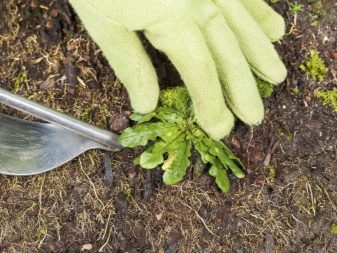
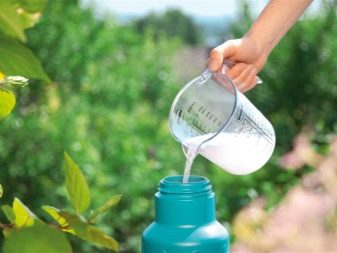
Transplant and reproduction
Turmeric belongs to a group of plants that need an annual rhizome transplant.
After a dormant period in early spring, the rhizome should be planted in a new planting container with a nutrient mixture. The earthy composition should have a loose structure and a low level of acidity. Experienced florists recommend purchasing nutritious soil for citrus fruits and mix it with river sand. When making your own soil mixture, it is necessary to add peat and deciduous humus to the soil.
To prevent decay of the root system, it is necessary to lay drainage material on the bottom of the pot.
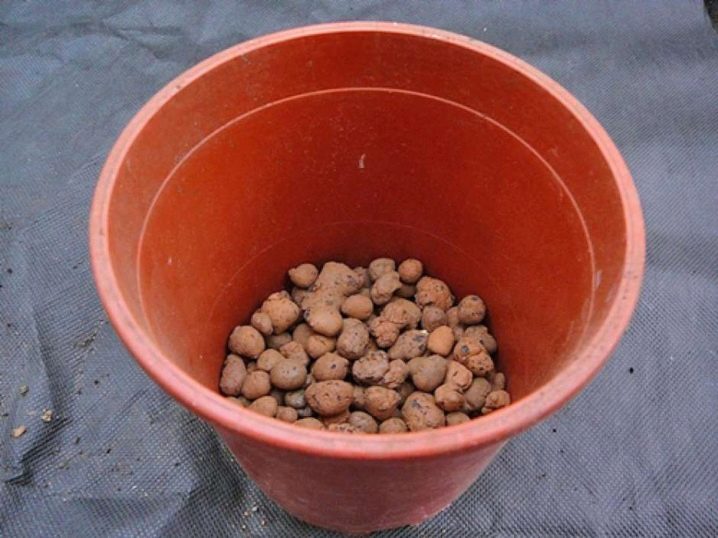
To get new plants at home, you can use two breeding methods:
- division of the root system;
- seeds.

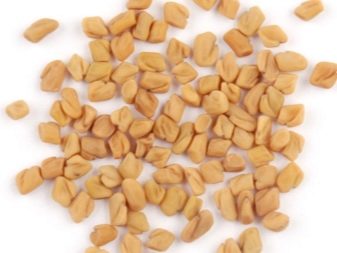
Before planting in spring, it is necessary to cut the last year's rhizome into several parts with a sharp blade. Each part must have at least one growth point and more than two lateral roots.
To prevent infection of parts of the rhizome with fungal and viral diseases, it is imperative to sprinkle the cut sites with crushed activated carbon and dry them in the open air. Only treated parts can be planted in nutrient soil.
Experts do not recommend dividing the roots into small parts that will not be able to form peduncles for a long period of time. Plant propagation using seeds is a long and painstaking process that only experienced breeders in professional nurseries use.
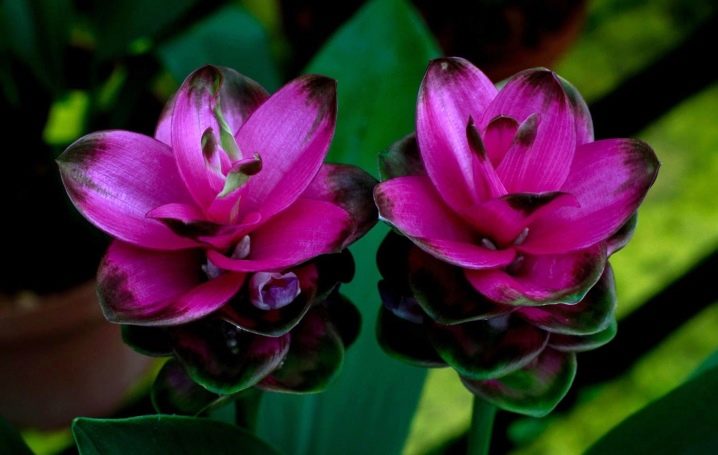
Diseases and pests
When growing an exotic plant, experts recommend paying attention to a number of diseases and some dangerous pests that can not only spoil the appearance of a flower, but also lead to its death.
Among the most dangerous pests, biologists distinguish the following insects:
- shield;
- thrips;
- spider mite;
- aphid.
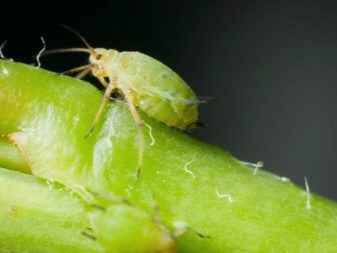

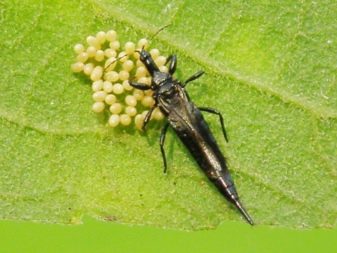
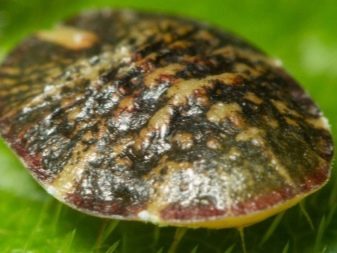
When the first signs of damage to the plant by pests appear, it is necessary to treat turmeric with special chemicals.
Violation of growing and care conditions can provoke the development of fungal diseases. The most common diseases are putrefactive processes of the root system. To prevent them, it is necessary to provide the plant with high-quality drainage and moderate watering.
For many years, exotic plants have gained wide popularity, which are used not only in landscape design, but also in the design of residential premises. Professional breeders are working to adapt these plants to other climatic conditions.

For information on how to transplant turmeric into soil with zeolite, see the video below.































An unpretentious plant and very beautiful.
The comment was sent successfully.